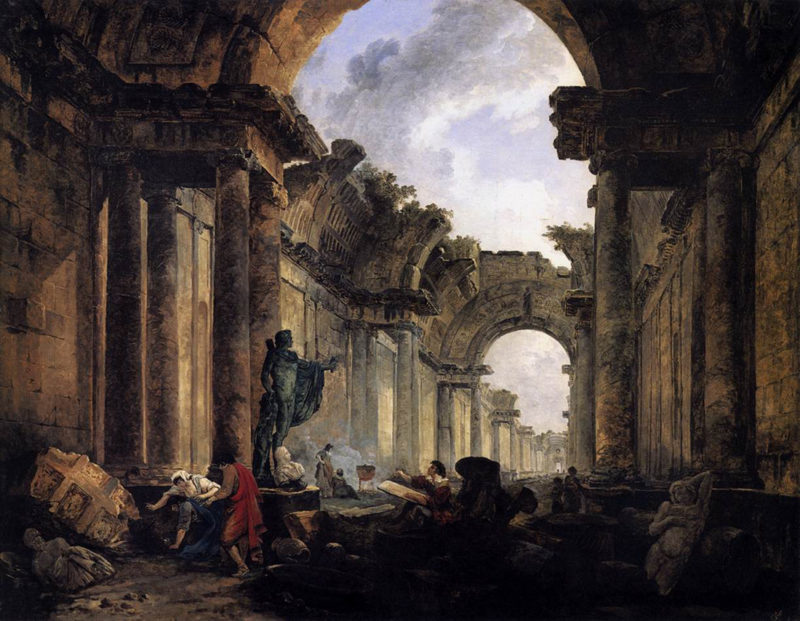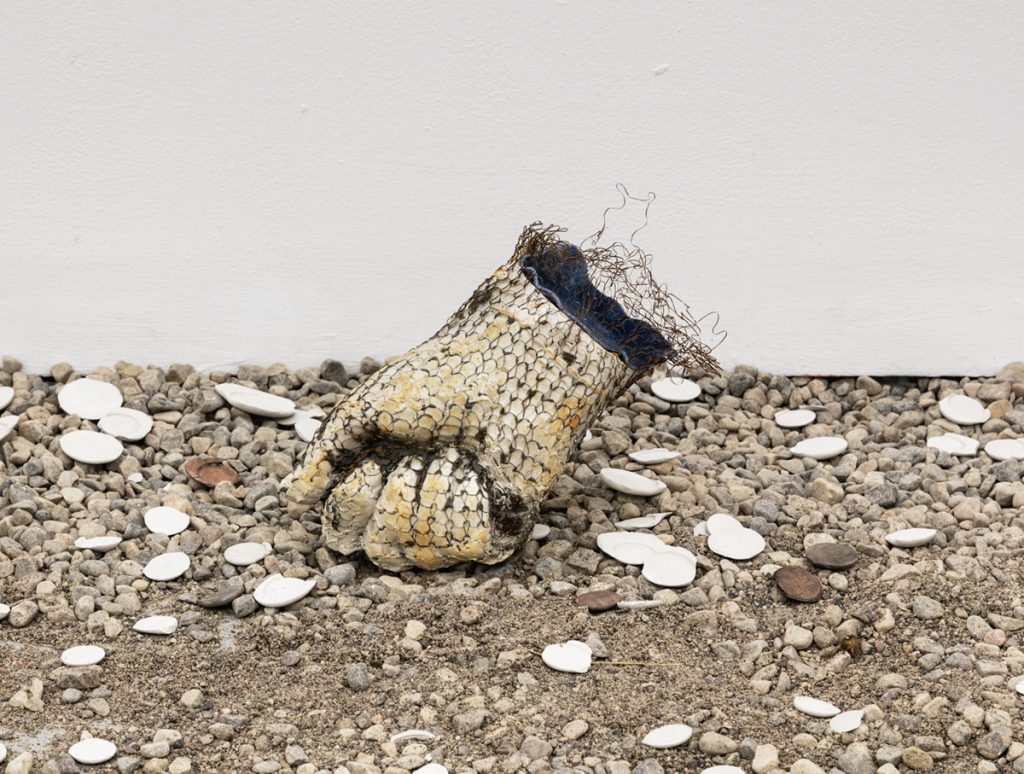Towards a Contemporary Caprice: Every empire has an end at Franz Kaka
23 July 2019
By Lucas Regazzi
Capriccio, or Caprice—as it’s been anglicized—refers to a historical genre of painting developed over the 16th to 18th century. Artists of the genre proposed, for the first time in Western history, that ruination architecture be ushered from background to subject. Immediately preceding this, architectural depiction in the Roman tradition of painting was relegated to ceiling frescoes, illusioning space to elicit divine wonder in God’s house. With this understanding of symbolic potential, artists began fantasizing architecture—assembling disparate buildings and monuments in pictorial space, or imagining new buildings and circumstances altogether—as a sort of visual poetry. At the genre’s height, the most notable caprices depicted dilapidation.
Romantic era ‘ruin lust’ has been theorized by scholars as a way of contemplating civilizational impermanence; an expression of trauma in early capitalism—particularly in the works of Giovanni Panini and Giovanni Piranesi. (1) The fear of catastrophe in the viewer of a caprice is intellectually productive.
The things of our world have been destroyed.
|
What other worlds can exist, now, instead?
When a building surrenders to its episodic death, it takes on new conceptual dimensions; it facilitates progressive architectural iterations, so heralding new social possibilities. (2)

The public importance of the imagined ruin helped sustain the meaning of caprices in the time of their making. Consider Hubert Robert of 18th century France, rendering monuments of the Enlightenment destroyed. Imaginary View of the Grand Gallery (1796) proposes the Louvre in ruin. In it, the crumbling relic features minute human figures, throwing their bodies to the air in distress. The ceiling has broken, enough that a large swath of sky is visible. As a viewer I can feel a kind of sympathy for the people. They, my approximate stand-ins, ask I imagine my own world in shambles.
In Every empire has an end at Franz Kaka, a two person show with Toronto-based artists Jenine Marsh and Jennifer Carvalho, the gallery is capricious. Upon entering I’m met with an entire floor occupied by materials using a language of rubble. Marsh’s scentless flowers, present conditions of change (2019) consists of so many discontinued coin casts, “found train crushed trash” (3) and other things beyond their intended use. The work cracks beneath me as I trail through it.
Sculptures birthed of another approach, gap in fence (1-5) (2019), mark the floor at specific sites. They’re casts of the artist’s fists, formed in a woven wire, then filled with Gypsum cement and pennies. A deep blue velveteen covers the sculptures at their crowns, which cut off at the artist’s wrists. They appear like pedestals, beckoning things to display. In another moment, the velveteen adorns the floor as a whole sheet, holding bits of scentless flowers and gap in fence (4) and (5).

Carvalho’s paintings explore ruin painterly. The five works—consisting of an imprinted still from the Tarkovsky film “The Stalker,” depictions of overgrowth and walls half-standing, altered monuments and ambiguous portraiture—flash on the walls like beams of light through a fault. They represent caprice in its original material language: oil on canvas.
Early this spring, I saw the Notre Dame cathedral burst into flames on a random Twitter-user’s live broadcast. I’ve never travelled to Paris, so the church has only ever been an image to me. But buildings constitute meaningful expressions of a society’s values. It feels possible to interpret their destruction as markers of a social paradigmatic shift. Weeks after the news cycle had lost interest in the Notre Dame’s demise, I spotted an article illustrating different markups of possible ideas for its extravagant remodelling (one image depicts the church with a rooftop pool.)

The Notre Dame signified the best of French Gothic architecture, a register of aesthetic knowledge from its era. By its sheer monumentality, the Notre Dame imposed its worldview on the present, proving things transcend time in culturally significant ways. When such a symbol is destroyed, its magnitude can be atomic. And from the rubble, billionaires have decided the new world deserves a grotesque monument to luxury. With things this absurd coming to light on a daily basis, I find I’m often overwhelmed by the feeling that we are at the edge of our civilization as we know it.
In this exhibition, I know I should be disturbed by ruin as a symptom of catastrophe, but somehow it puts me at ease, feels optimistic even—how, in her paintings, Carvalho renders another time and space altogether, where structural collapse is a kind of poetry: beautiful groves of vines grow from all over the detritus, huge bunches of wildflowers engulf every crevice; there is no soul in sight (beyond our spectres). It’s a soft counter pose to the rooftop pool.

In Marsh’s work, all over the floor, renderings of excess tender turn our bygone currency into something treasurable once more. I remember an Anne Boyer tweet condemning the contemporary obsession with investing objects in esoterica, specifically healing crystals. She begs that we “learn the healing properties of concrete chunks broken cd cases and asphalt,” as a kind of retort to material elitism. (4) I still have a bunch of out-of-circulation pennies in my drawers at home, perhaps waiting to meet their oracular potential.
If Every empire has an end is a contemporary caprice—grown experiential—what is the trauma that it seeks to express? How do we rebuild from it? Beyond the rubble, I want a truly better world for all. I want more propositions from the ruins. We need relief.
1. Nadir Lahiji, “Building In-Between the Two Deaths,” In Architecture Post Mortem : The Diastolic Architecture of Decline, Dystopia, and Death, edited by Simone Brott, David Bertolini, and Donald Kunze, 57 (Burlington, VT: Ashgate).
2. Kazi Khaleed Ashraf, “Post Mortem: Building Destruction,” In Architecture Post Mortem: The Diastolic Architecture of Decline, Dystopia, and Death, 81.
3. Artists’ notes.
4. Anne Boyer, Twitter Post, February 21, 2019, https://twitter.com/anne_boyer/status/1098657840317845505.
Every empire has an end ran from March 8 – 30, 2019 at Franz Kaka in Toronto, ON.
Feature Image: gap in fence (2), 2019 by Jenine Marsh. Photos courtesy of the artists and Franz Kaka.



